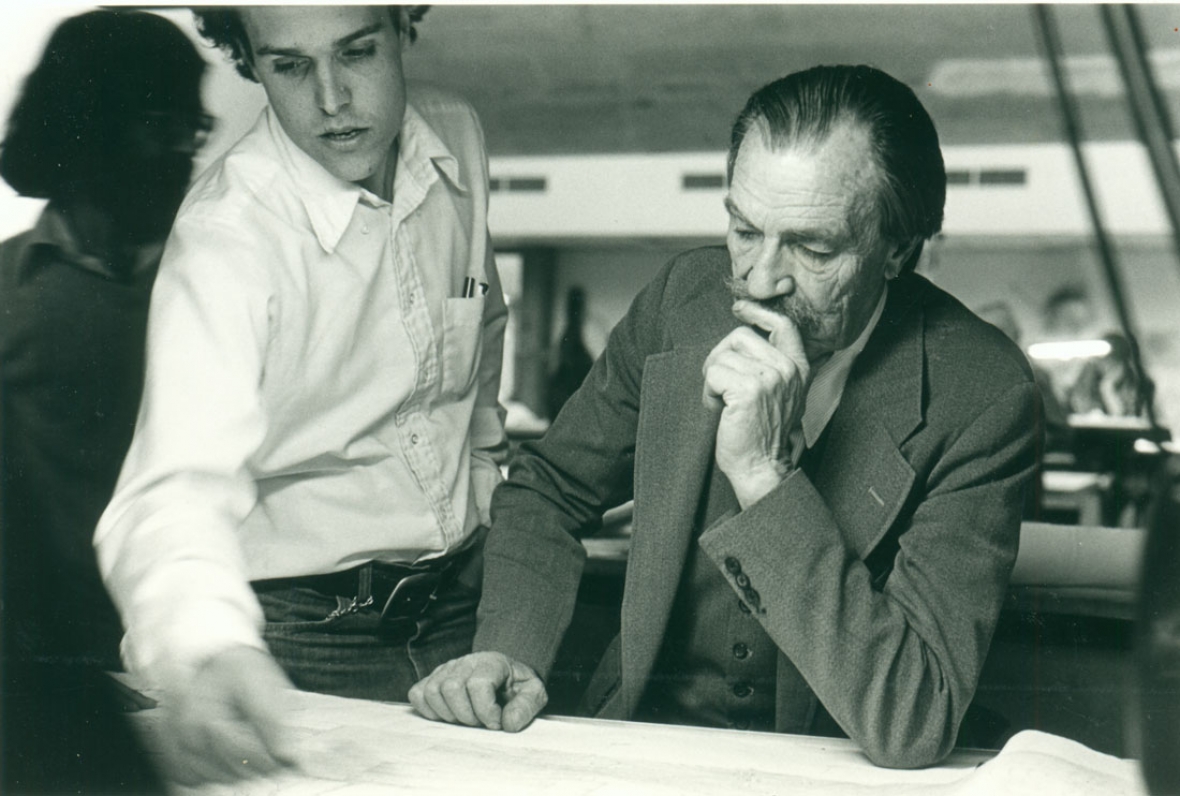Publication - Ian McHarg
Visit Manitoga, the House, Studio and Woodland Garden of pioneer industrial designer, Russel Wright (1904-1976). Tour Dragon Rock, Wright’s experimental home which he built onto the rock ledge of an abandoned quarry while masterfully orchestrating the surrounding landscape into a series of outdoor rooms of varying character and delight.
A TEMPLE TO ECOLOGICAL DESIGN
By Ian McHarg (1920-2001)
Emeritus Professor of Landscape Architecture
and Planning, University of Pennsylvania
Russel Wright told us that the site which he purchased in the Hudson Highlands in 1942 was nondescript, mauled by an earlier history of lumbering and quarrying. How fortunate for us all that it was he who acquired the site, for he brought several crucial skills and attitudes to bear. He was a famous designer with a national reputation. He was committed to nature, perhaps from his experience as a farm boy in Ohio. He was devoted to simplicity and natural materials and forms. However, the Ohio background would be of little help for the Hudson site. This must be learned, which RW proceeded to do, first during weekends and holidays, later full-time when he made Manitoga his permanent residence. There he came to know the plants, rocks, soils, water, climate, and creatures comprising the site, and the successional process that would ensue. It was these that he manipulated, perhaps edited. Some species, exotic and invasive, he removed; others he managed for light and shade. Certain species he introduced, notably wildflowers; others, ferns and mosses, he cultivated.
In this process, RW identified certain locations that offered dramatic experiences or views. They in turn were linked by the pathway system, which did much to demonstrate the richness and natural history of the site. So the distinguished designer became a field ecologist and inspired ecological designer, whose greatest work is Manitoga, a temple to ecological design, an exemplar for all designers and landscape architects, and for all ecosystems waiting to be idealized and appreciated.
If it had been built in Japan, Manitoga would be a national monument, visited by processions of pilgrims. Japan has many such sites-Rioanji, Saihoji, Katsura, and more-but the United States has only Manitoga, the temple to managed succession, inspired ecological design. It deserves to be much more widely visited and emulated. Could we have idealized ecosystems throughout the nation?
In 1992, on the occasion when I received the National Medal of Arts from President Bush, he said to me: "Professor McHarg, it is my earnest hope that the art and science of the 21st century will be devoted to restoring the land."
May it be so. Let Manitoga be its best example.
Ian McHarg, who died in 2001, was an internationally recognized pioneer in the field of human ecological planning. He helped establish the University of Pennsylvania's department of Landscape Architecture and Regional Planning in 1955, and in 1960 was co-founder of Wallace, McHarg, Roberts and Todd, a distinguished landscape architecture and planning firm in which he was a partner until 1981. His books include To Heal the Earth (1998) and Design with Nature (1969). Among his many awards is the Japan Prize in City Planning, which he received in 2000.

